Takeaways after analyzing 108+ Coffee Roaster websites.
With more specialty coffee brands launching online than ever before, standing out requires more than just high-quality beans—it demands a seamless, customer-focused digital experience.
At AssistLabs, we’ve reviewed 108+ coffee roaster websites worldwide to understand how industry leaders design and structure their websites to create frictionless user experiences, drive engagement, boost conversions, and strengthen brand value.
In this report, we break down the key website elements that set top-performing coffee roasters apart—and how you can apply them to fuel your own growth.
1. Prioritize Mobile-First Design
For the past seven years, mobile usage has been on a steady rise, and today, 70% to 80% of website traffic comes from mobile devices. Yet, in our review of 108+ coffee roaster websites, we found that 72% were not truly optimized for mobile.
While most had a mobile-responsive design, they lacked a mobile-first approach, meaning the user experience was simply adapted from desktop rather than intentionally designed for smaller screens.
By providing a mobile-first layout and intuitive mobile navigation, you’ll not only see lower bounce rates but also higher conversions. A seamless mobile experience creates immediate trust and encourages visitors to spend more time exploring.
Actionable Step For You
- Perform a mobile audit to identify broken layouts, oversized images, and lengthy scrolling. If possible test it on different screens and browsers.
- Simplify navigation menus to fit smaller screens—prioritize essential categories.
- Use mobile-friendly payment options (Apple Pay, Google Pay) to speed up checkout.
Example – Verve Coffee has one of the best built websites for both desktop and mobile users. Check out the image below, how they have created a clean mobile layout with a compact Menu designed just for their mobile users.
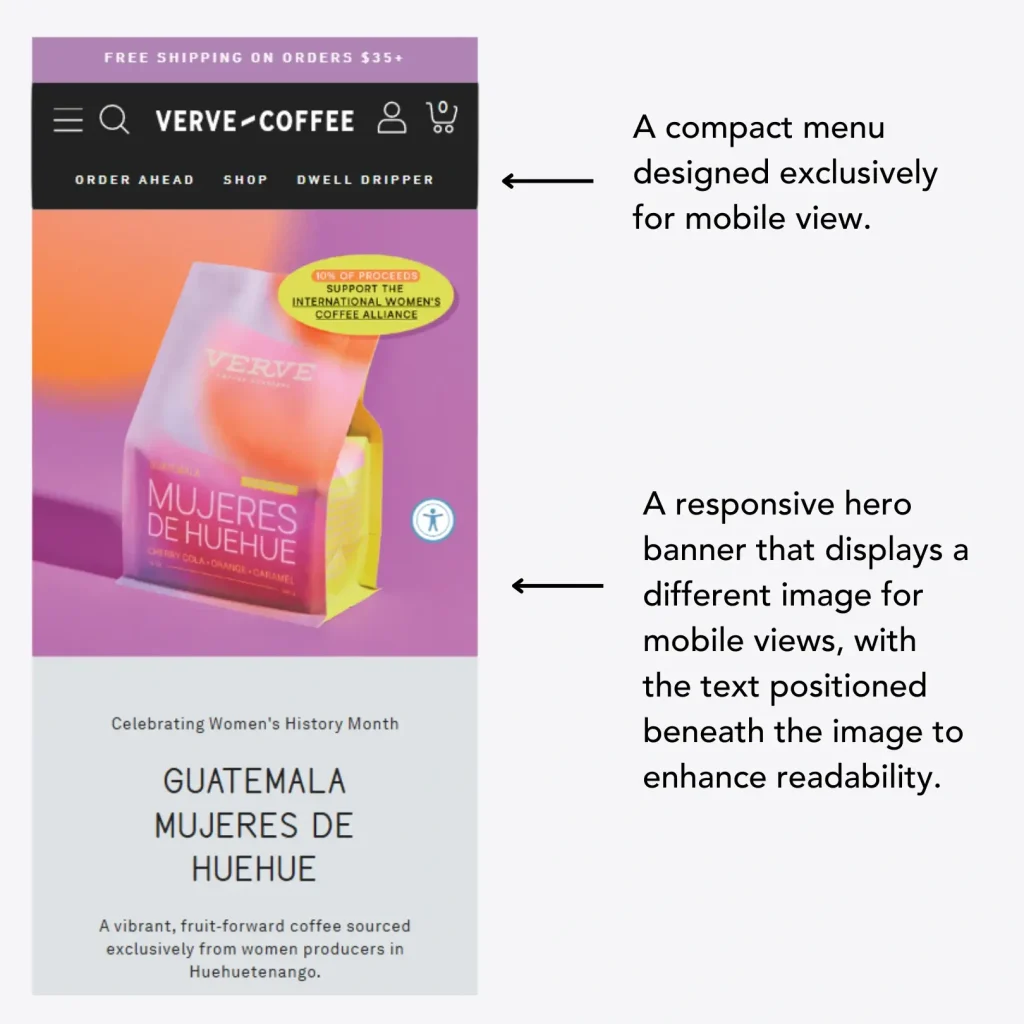
2. Optimize Product Pages for Clarity and Appeal
Lengthy, text-heavy product descriptions and inconsistent formats can make it difficult for users to compare products, find their ideal blend and fully appreciate the unique nuances of each coffee.
In contrast, the best-designed coffee roaster websites feature clear, concise, and visually rich product descriptions that do more than just inform—they engage and invite customers into the experience. These descriptions are structured to quickly communicate key details while also telling a story, helping users connect with the coffee on a deeper level.
Well-structured, benefit-driven descriptions keep shoppers engaged. Clear product pages also reduce returns and customer inquiries because buyers know exactly what they’re getting.
Actionable Step For You
- Use concise, compelling copy: Highlight the origin, flavor notes, and roast level upfront.
- Use short paragraphs and images, infographics ( wherever possible )
- Incorporate high-quality images and short video clips showing the coffee beans or brewing process.
- Maintain a consistent layout across products to make comparisons easier.

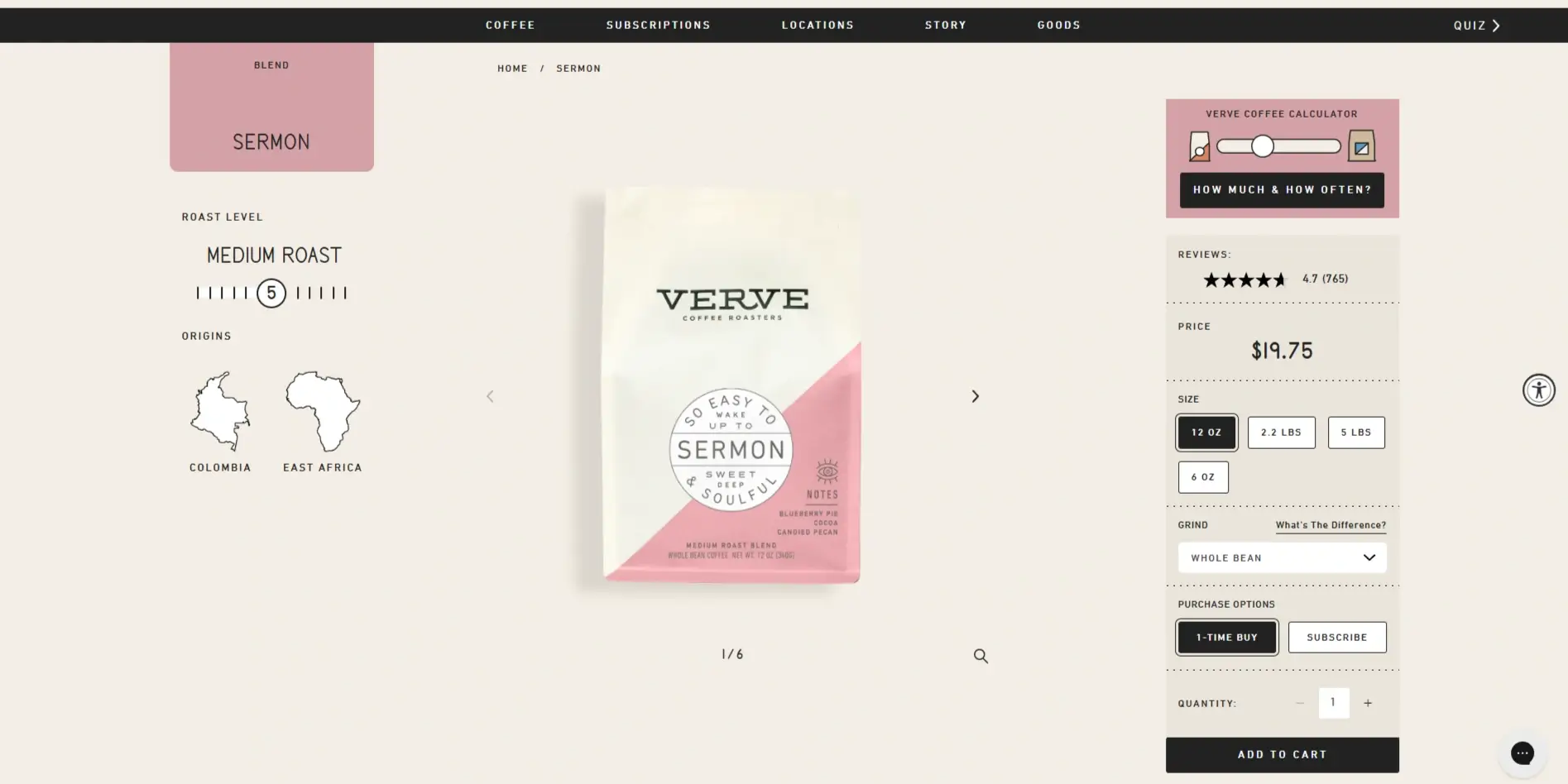


3. Website’s Information Architecture
Customers shouldn’t have to hunt for key information. The best coffee roasters design their websites with intuitive navigation, making it effortless for visitors to explore different coffee types—whether it’s Single Origin vs. Blends, selecting coffee by brewing method, or filtering by roast level. Essential details like subscription options, sustainability practices, and brand values are also easy to find, eliminating frustration and guesswork.
A well-structured website minimizes confusion and reduces abandonment rates.
When customers can quickly find what they need (especially on mobile), they’re more likely to complete a purchase, explore more products, and return for future orders, creating a smoother path to conversion and brand loyalty.
Actionable Step For You
- Understand How Your Customers Search for Coffee:
Observe user behavior using heatmaps, analytics, and direct customer feedback to identify how they naturally explore coffee products. Are they searching by roast level, brewing method, flavor profile, or origin? Understanding these patterns will help you structure your menu to match their expectations. - Follow Jakob’s Law & Learn from Industry Leaders:
Jakob’s Law states that users spend most of their time on other websites, meaning they expect yours to function in a similar way. Instead of reinventing navigation, analyze the menus of leading coffee brands in your region—many customers, especially new ones, are already familiar with their layout. Adopting industry-standard structures makes your site feel intuitive while still allowing you to refine and improve upon them. - Map Out Your Categories and Subcategories:
Structure your menu in a way that allows users to filter and find coffee quickly:- By Type: Single Origin, Blends
- By Roast Level: Light, Medium, Dark
- By Brewing Method: Espresso, French Press, Pour-Over, Cold Brew
- By Flavor Profile: Chocolatey, Fruity, Nutty
- Make Navigation Elements Instantly Accessible:
Ensure high-priority pages (Shop, Subscription, Brewing Guides, Sustainability, About Us) are clearly visible in your top navigation bar or a sticky menu, so users can access them from anywhere on the site. - Implement Breadcrumb Navigation for Clarity
Use breadcrumb navigation on internal pages to help users track their location on your site and easily navigate back, reducing confusion and improving the browsing experience.
4. Leverage Social Proof and Engaging Media
Online shoppers can’t smell or taste your coffee—social proof and dynamic visuals fill that gap.
Customer reviews, user-generated content (UGC), and videos—helps bring your coffee to life and builds trust quickly.
When potential buyers see real people enjoying your coffee, they feel more confident in their purchase. This trust leads to more sales, repeat customers, and a stronger brand reputation.
Actionable Step For You
- Feature testimonials and star ratings prominently on product pages.
- Encourage customers to share their brewing experiences on social media.
- Highlight these UGC posts on your store to showcase community engagement.
- Incorporate video clips of the roasting process or latte art to spark curiosity.
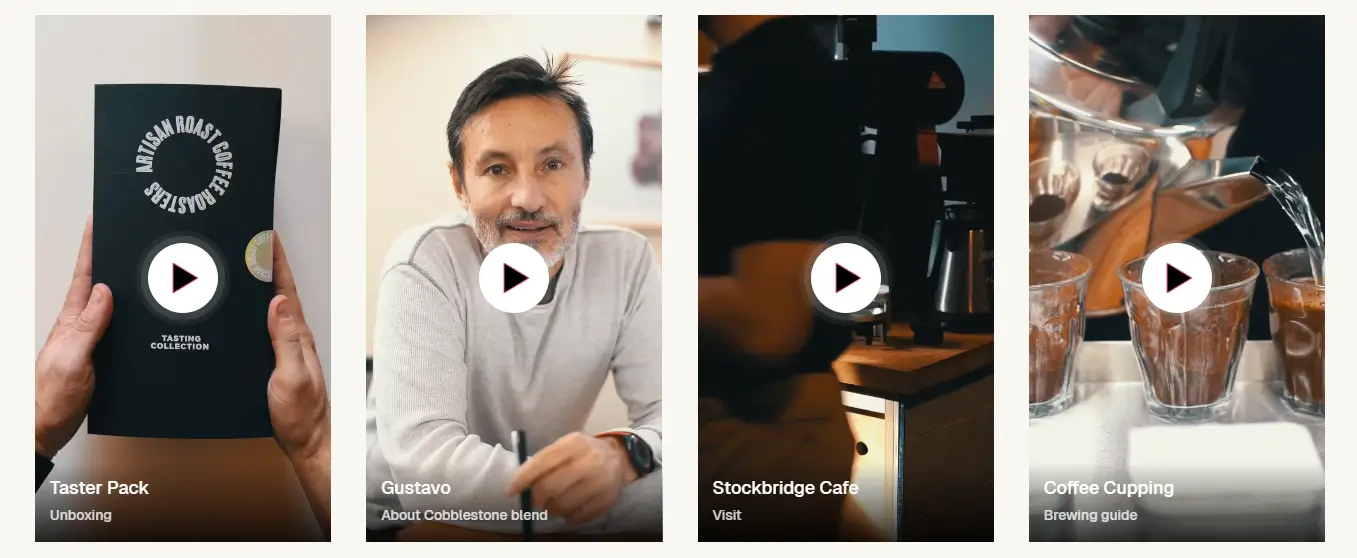
5. Make Coffee Subscriptions Effortless and Clear
Subscriptions create predictable revenue and long-term customer relationships, making them one of the most powerful growth drivers for coffee roasters.
However, if the sign-up process is confusing or the subscription page lacks clarity, potential subscribers will hesitate or abandon the process.
A well-designed subscription page should clearly explain how it works, answer common questions upfront, and offer flexible options that make it easy for customers to commit.
Actionable Step For You
- Design an Easy-to-Understand Subscription Page: Use clear headings, bullet points, and visuals to explain how your subscription works, pricing tiers, delivery schedules, and customization options.
- Answer Common Questions Upfront: Create a FAQ section addressing common concerns like “Can I pause or cancel my subscription?” or “What happens if I run out of coffee early?”
- Offer Flexible Subscription Options: Let customers choose between different frequencies (weekly, bi-weekly, monthly), grind preferences, and roast levels to fit their needs.
- Highlight Subscriber Perks & Milestone Rewards: Clearly showcase benefits like discounts, free shipping, early access to new blends, and milestone gifts (e.g., a free bag of coffee after six months, exclusive merch, or brewing accessories). These small incentives reinforce loyalty and reduce churn.
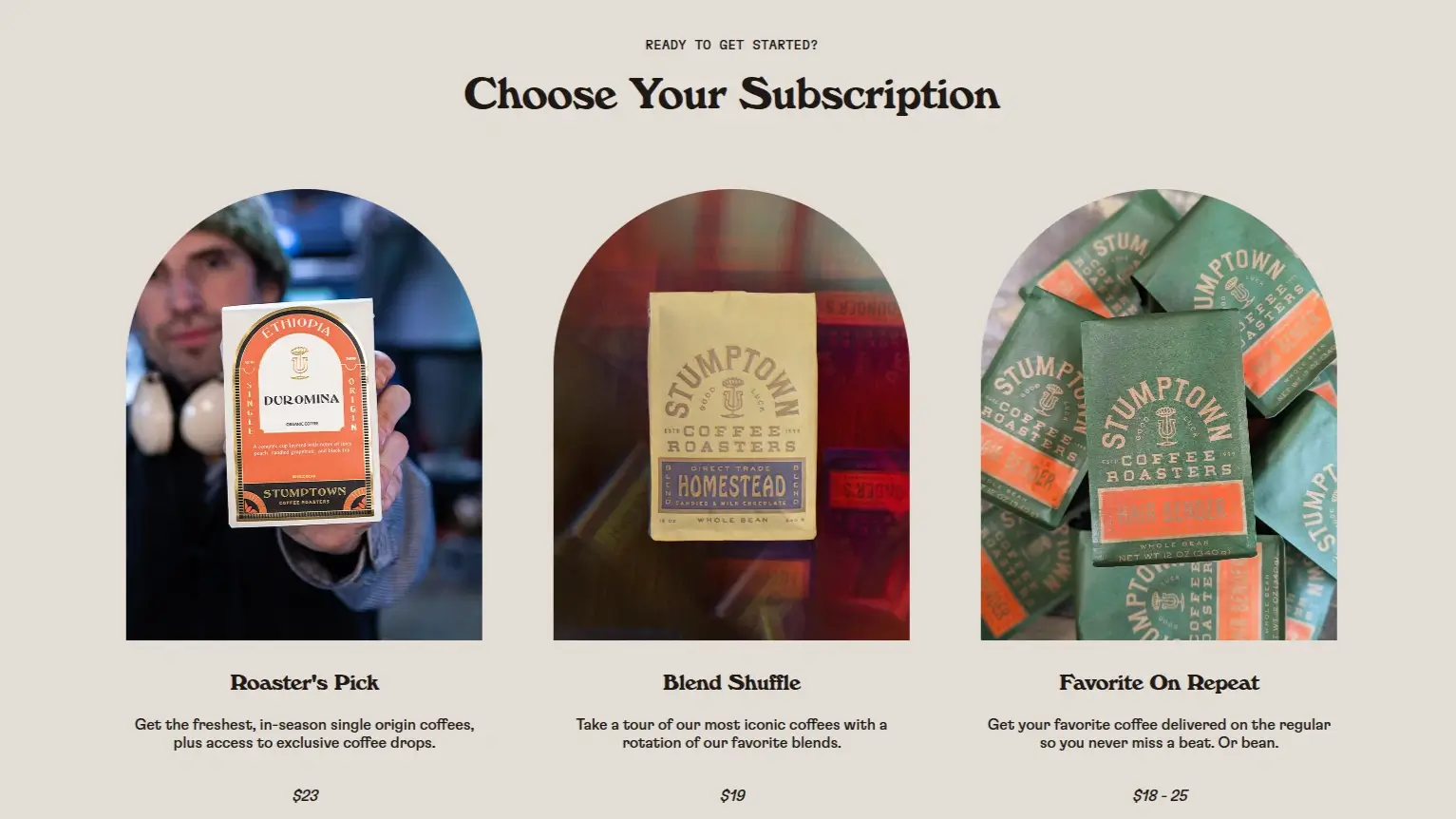
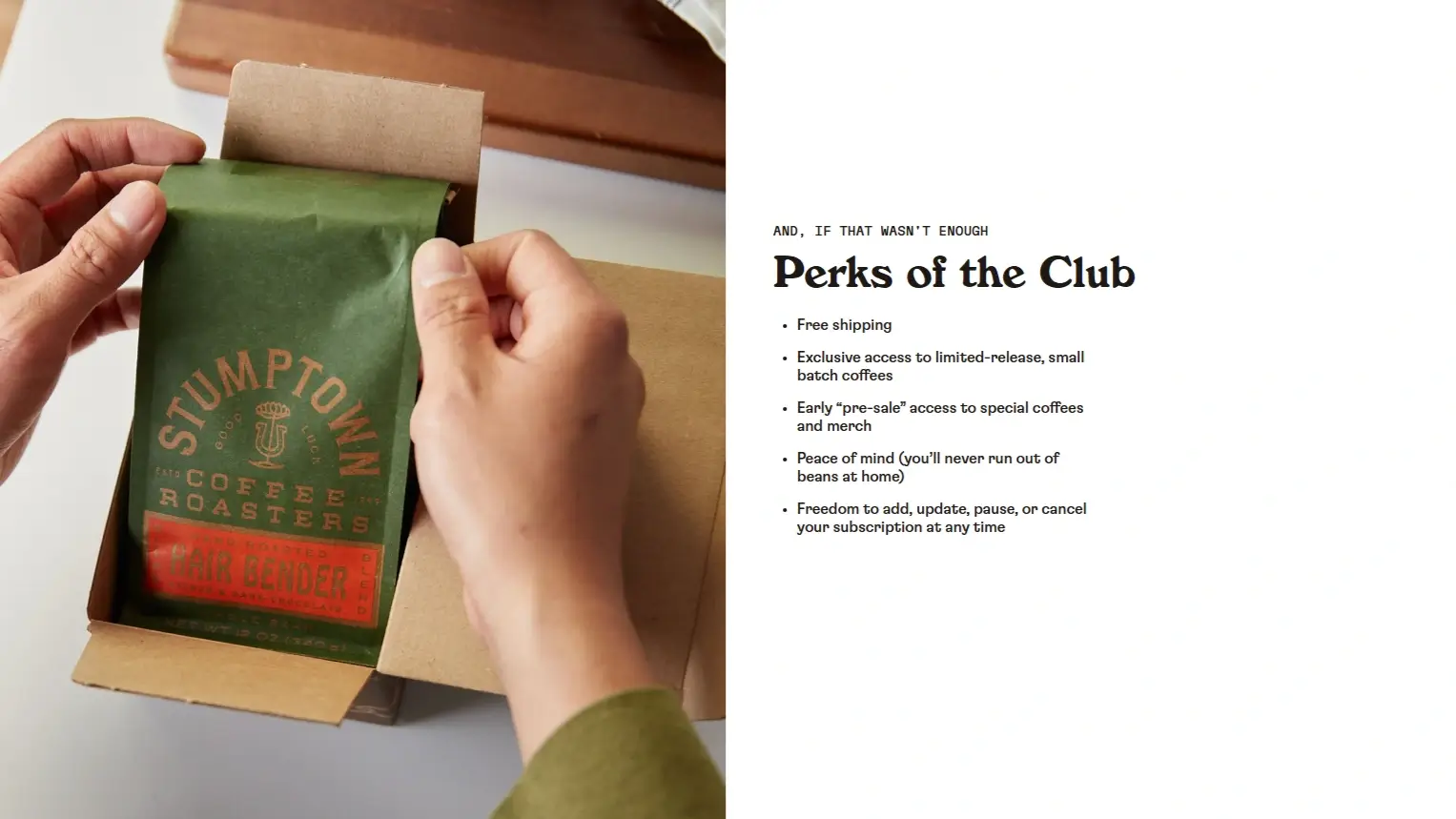
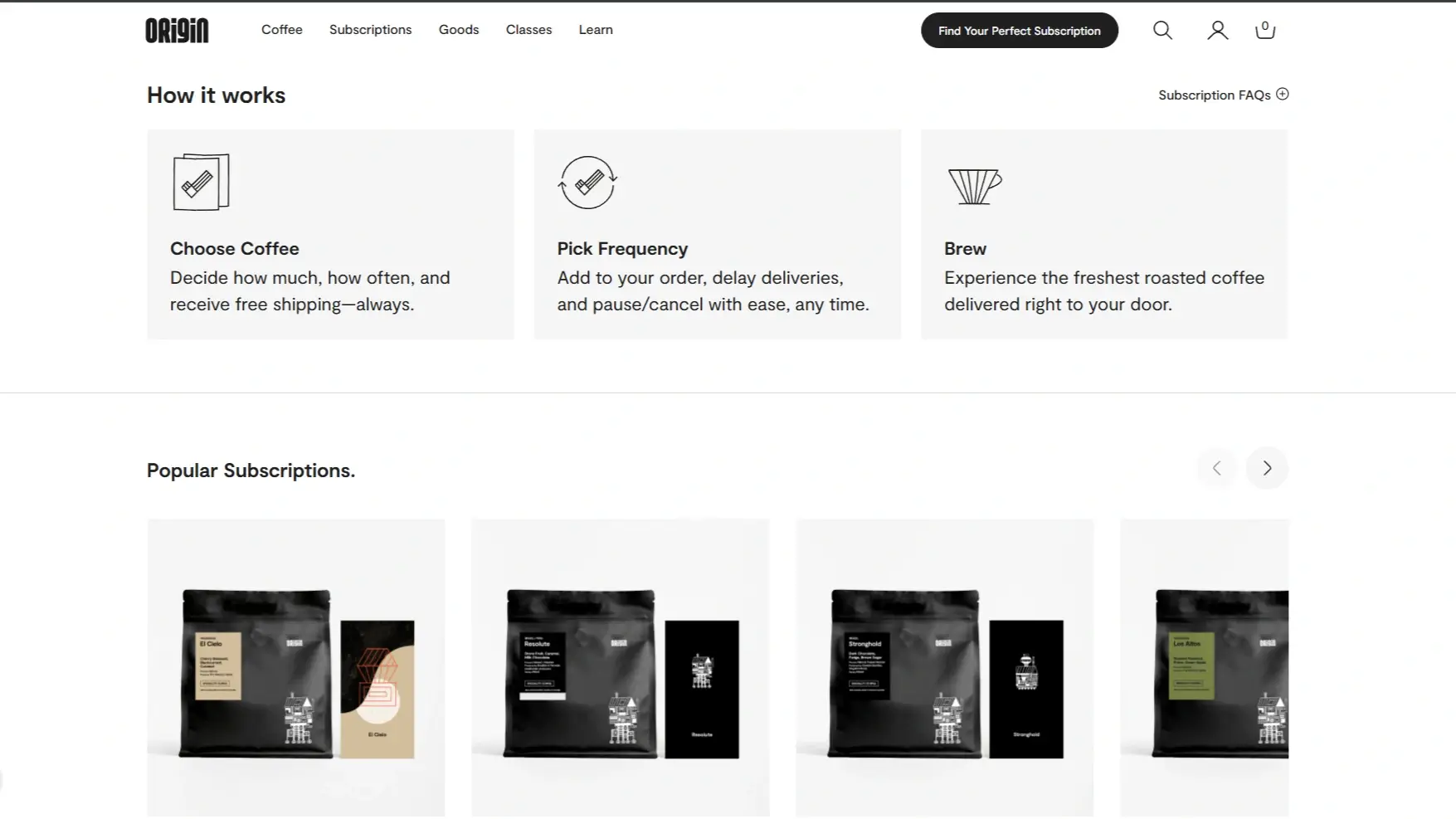
6. Highlight Sustainability & Fair Trade Commitments
When customers see genuine commitments—such as fair wages for farmers or eco-friendly packaging—they feel good about their purchase. This moral resonance often results in stronger brand loyalty and positive word-of-mouth.
In our analysis of over 108 coffee roaster websites, we observed that nearly all top brands prominently showcase their Sustainability & Fair Trade practices. This emphasis indicates that coffee consumers highly value ethical sourcing and environmental responsibility when choosing their preferred brands.
For instance, brands like Just Us! Coffee Roasters Co-op and Peace Coffee have made sustainability and fair trade central to their brand messaging.
Actionable Step For You
- Feature Sustainability Efforts on Your Homepage: Dedicate a prominent section to highlight your sustainability initiatives and certifications, such as Fair Trade or Organic labels.
- Share Behind-the-Scenes Stories: Offer insights into your sourcing practices and partnerships with local farmers through blog posts or videos.
- Use Visual Elements to Showcase Impact: Incorporate badges, icons, or short videos to visualize your environmental and social impact.
- Engage Customers in Your Mission: Encourage customers to participate in sustainability initiatives, such as recycling programs or community events.

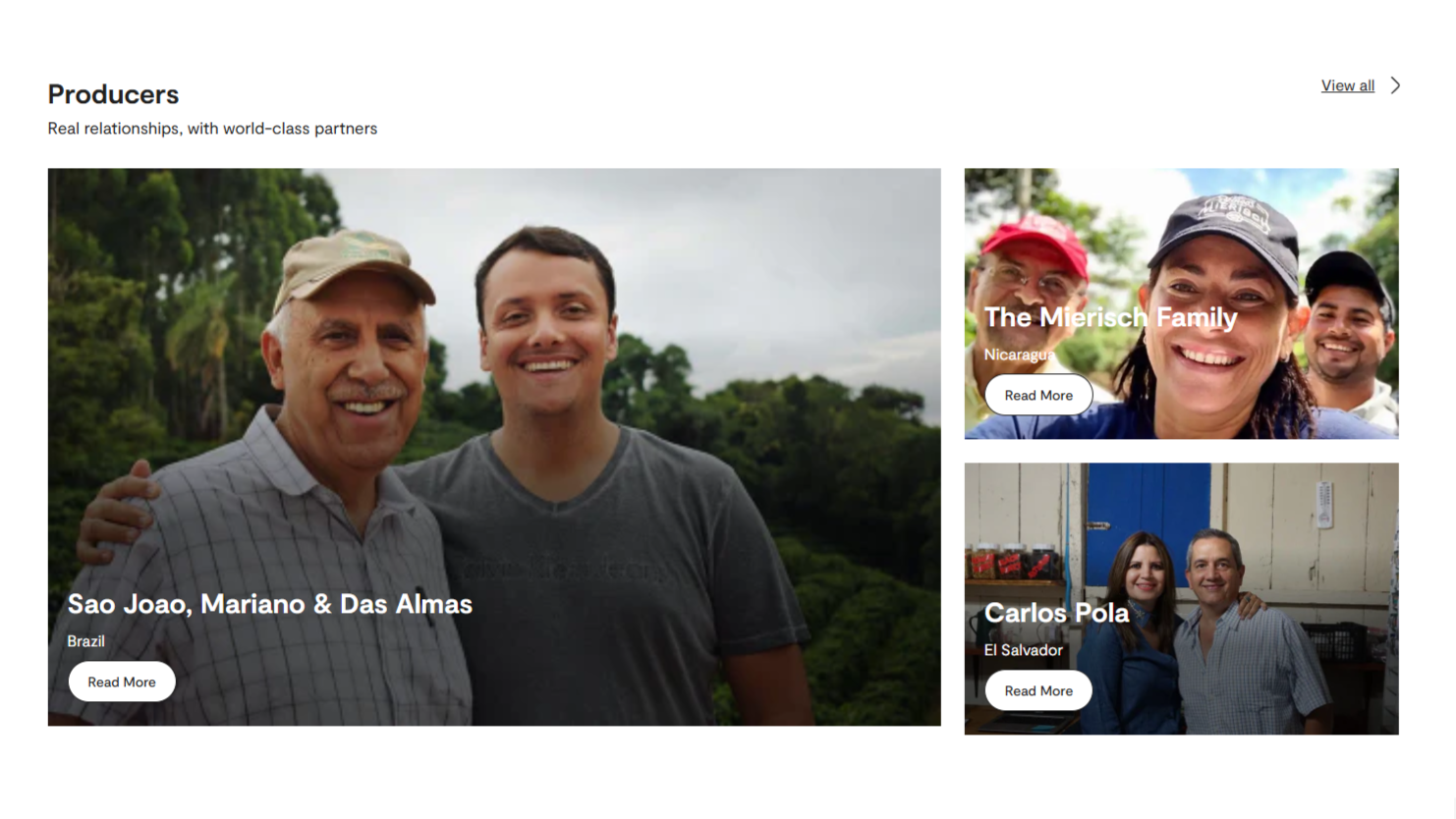
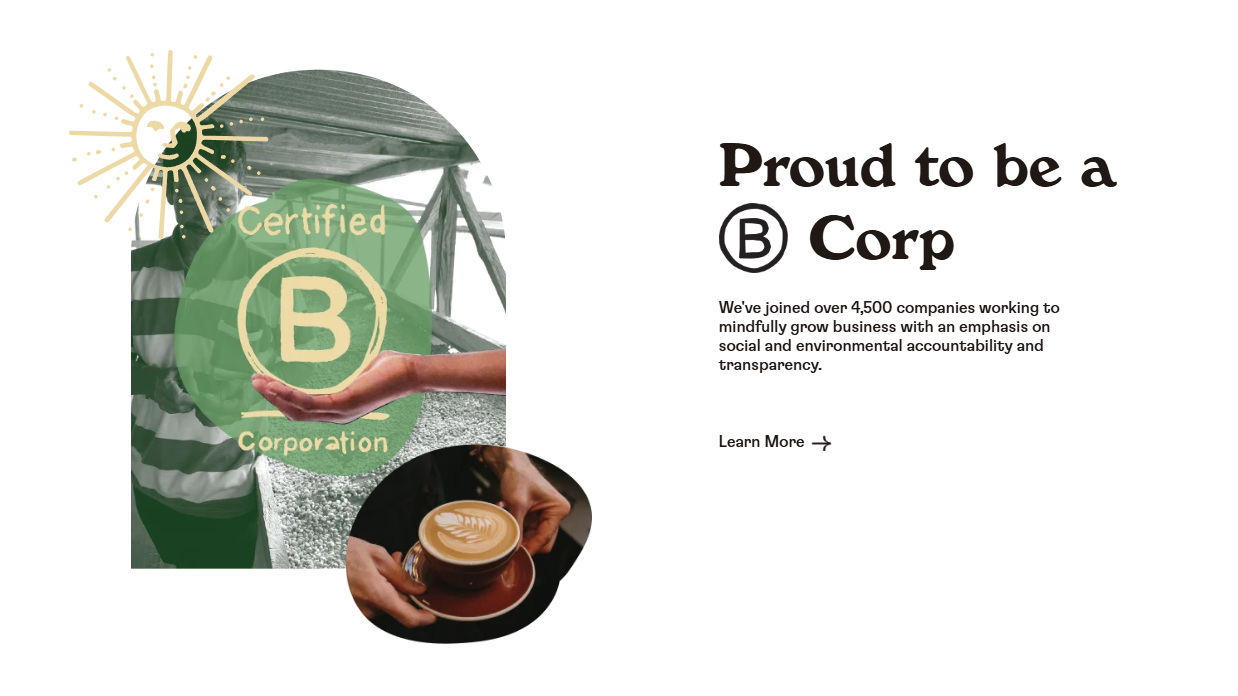

7. Quizzes For Tailored Recommendations
One of the standout features we noticed on top coffee roaster websites was the use of interactive Coffee Recommendation Quizzes.
These quizzes serve a dual purpose—helping customers quickly find their perfect coffee while also capturing valuable customer data, including email addresses for newsletter growth and targeted marketing.
Personalized recommendations create a deeper connection with customers by guiding them to the best coffee for their taste, rather than making them sift through endless options.
This reduces choice paralysis, making the shopping experience more interactive and enjoyable.
Actionable Step For You
- Create a Short, Engaging Coffee Quiz: Keep it simple—ask 4-6 questions about flavor preferences, roast intensity, and brewing methods to guide customers to the perfect coffee.
- Make Email Signup Part of the Quiz Flow: Before displaying results, offer customers the option to enter their email to save their personalized recommendations or receive special offers.
- Display Personalized Product Suggestions: Show users a curated list of coffee options based on their quiz responses, making it easy for them to add products to their cart.



Final Thoughts
The best coffee roasters aren’t just selling coffee; they’re creating seamless digital experiences that make it easier for customers to explore, purchase, and stay loyal. From mobile-first design to personalized recommendations and subscription clarity, these elements drive engagement, boost conversions, and enhance brand trust.
Now, it’s your turn. Take a step back and audit your website—which of these features are you already doing well, and where do you have room to improve? Even small changes can make a significant difference in user experience and revenue growth.
Want us to review your Coffee store?
Get a FREE Micro Audit — we’ll send you 3 actionable fixes or improvements you can make to your website right now.
Let’s make your site mobile-friendly, conversion-ready, and easy to navigate.

